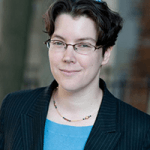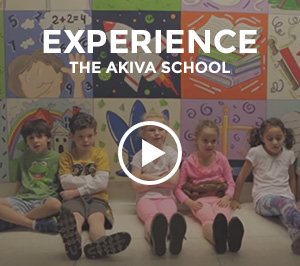 This week we are fortunate to have as our guest blogger, Rabbi Lisa Grushcow, Akiva parent and Senior Rabbi of Temple Emanu-El-Beth Sholom.
This week we are fortunate to have as our guest blogger, Rabbi Lisa Grushcow, Akiva parent and Senior Rabbi of Temple Emanu-El-Beth Sholom.
Shabbat Shalom.
 In this parsha, Jacob has a dream with a ladder, and angels going up and down. God reassures him that he will be protected on his path, and when Jacob awakes, he utters this line: “God was in this place, and I, I did not know.”
In this parsha, Jacob has a dream with a ladder, and angels going up and down. God reassures him that he will be protected on his path, and when Jacob awakes, he utters this line: “God was in this place, and I, I did not know.”
Many of us are comfortable with the experience of Jewish community or Jewish tradition, but what does it mean to experience Jewish spirituality? What does it mean to have a Jewish experience of God?
Arthur Green, in his Introduction to the Zohar, describes mystical experiences as, “striving toward oneness, a breaking down of illusory barriers to reveal the great secret of the unity of all being.” I think about Jacob’s experience in that light. It is a moment in which he understands that he is part of something bigger, and that his life’s journey has meaning.
Speaking as a synagogue rabbi, that is certainly what I want people to experience within our walls. Larry Kushner writes that “entrances to holiness are everywhere.” How can we help expose our children to the idea of living a holy, meaningful life?
The first way is learning. In the words of Elie Wiesel: “This isn’t instant coffee. There is no instant mysticism.” To get a sense of divine presence, we turn to sacred text, believing that study can give us a glimpse of God. We speak of ourselves as being the People of the Book, but the book is not meant to be an end in itself. It is meant to shape who we are as human beings. If we want our kids to read, let them see us reading; if we want them to be lifelong learners, let us be lifelong learners ourselves – and let them see how reading and learning can change us, as we open ourselves to new worlds.
The second way is prayer. I am inspired by the Talmudic teaching (Babylonian Talmud, Berachot 26b) that Jacob is associated with the evening prayer because of the experience of his dream, described in this week’s parsha. So when we come to the prayer, we are meant to put ourselves in Jacob’s sandals, vulnerable and uncertain. We teach our kids to pray to have a sense of belonging within Judaism, but we also teach them because we want them to have a spiritual vocabulary. We want them, as they grow, to be able to speak their hearts – with all the vulnerability, gratitude, hope and fear that this involves. If we can make space to bring our full selves to prayer, we can hope for that deeper connection. How important it is to model this for our children.
The third way is action. I recently spoke with a psychologist who said that the difference between sadness and depression is despair. At different times in our lives, both personally and societally, many of us have experienced that kind of despair, hopeless that we can help make change. But a community – whether it is a synagogue or a school – at its best, is a place where people come together to make a difference. The spirituality of action can help us feel agency over our lives, and a link to values that will outlive us.
God is in this place; may we know it.



